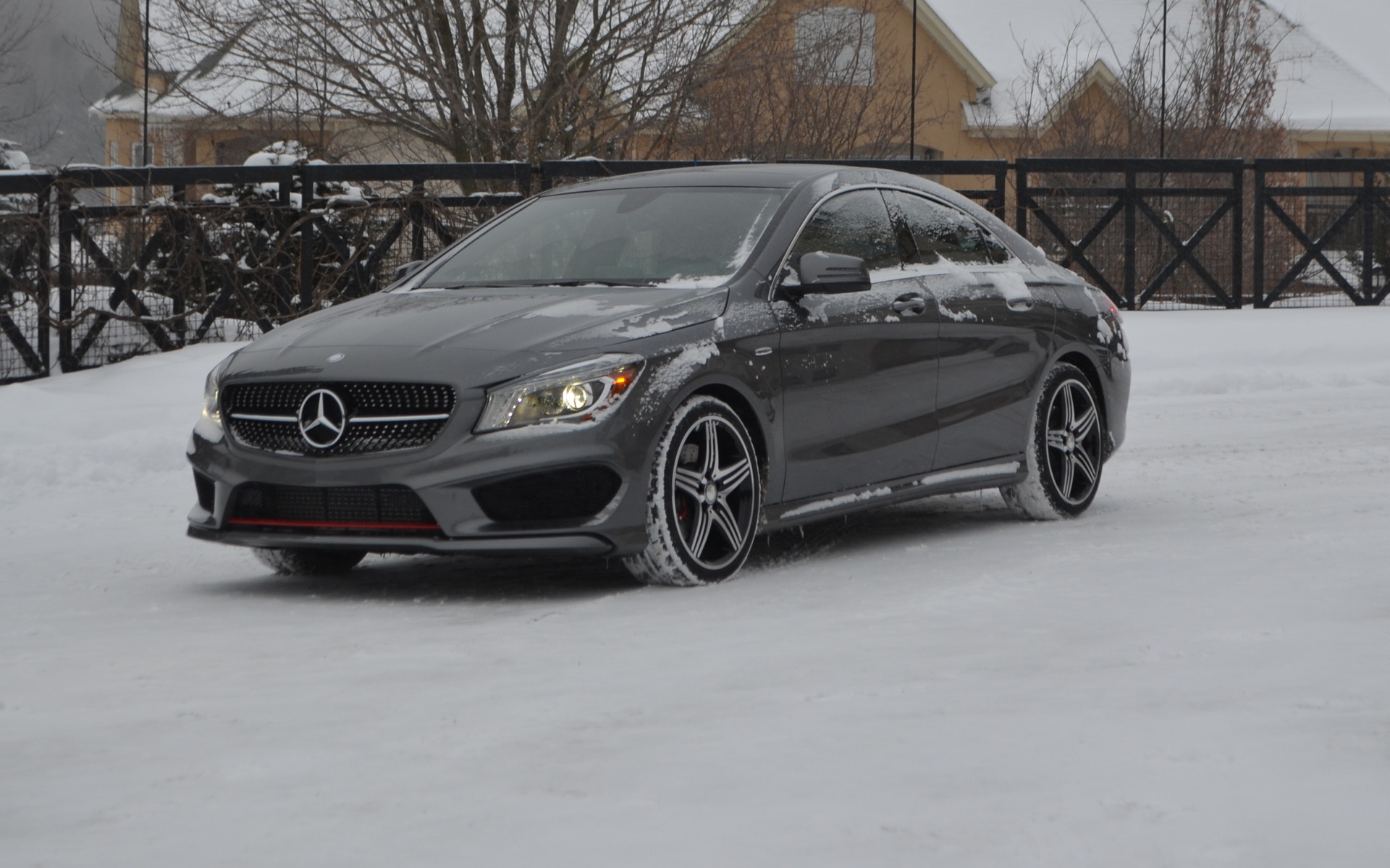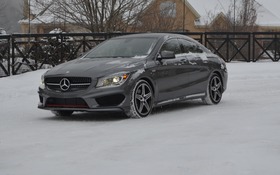Mercedes-Benz B 250 4Matic and CLA 250 4Matic: Snow Class

| Strong points |
|
|---|---|
| Weak points |
|
It was in the wintriest of conditions that Mercedes-Benz convened journalists earlier this week to test drive the new B 250 4Matic and CLA 250 4Matic. For your information, these two cars share the same chassis and mechanical components. They first appeared on the market as front-wheel drive versions, but even then (the end of December 2012 for the second-generation B and September 2013 for the CLA) there was talk of possible four-wheel drive versions. Also known as all-wheel drive (AWD), these systems are often given almost poetic names by manufacturers for marketing purposes. At Mercedes-Benz, it’s known as 4Matic and it is installed on more than 80% of the vehicles sold by the brand in Canada.
The all-wheel drive system in the B and CLA is derived from the system that equips other Mercedes-Benz products, except that it’s adapted for vehicles that are, at heart, front-wheel drive (instead of rear-wheel drive like the majority of the rest of the Mercedes lineup). In the case of the B and CLA, the system functions like a front-wheel drive when the road conditions are perfect, but can send up to 50% of the torque to the rear wheels if the need arises. This system is also used in the GLA crossover but not in the CLA 45 AMG 4Matic, which has a different system oriented much more towards sportiness.
Not all that different
All-wheel drive adds about 40 kilos to a basic B 250 or CLA 250. Weather conditions prevented us from performing any acceleration testing, but I imagine that the 0-100 km/hr sprint would take a good second more with all-wheel drive, and come in at around 8.0 or 8.2 seconds. The engine and transmission remain exactly the same: A 2.0-litre four-cylinder turbocharged engine that develops 208 horsepower at 5,500 rpm and 258 lbs.-ft. of torque between 1,200 and 4,000 rpm. The automatic gearbox is an eight-speed twin-clutch. Regardless of the model, the engine sound during acceleration is not very gratifying and it still seems to lack a bit of punch in low gear.
The main difference between a base model and a 4Matic is the bump in the rear floor, which is much more pronounced since the all-wheel drive system requires a driveshaft to turn the rear differential. According to the numbers provided by Mercedes-Benz, trunk space is not reduced at all in the process.
Where there is a loss, albeit relative, is in your bank account, which will be relieved of an extra $2,200 when 4Matic is added, though this amount will be recovered in large part at resale a few years down the road. However, many people opt for leasing in this market segment, and I wouldn’t be surprised to see dealerships include the 4Matic option so as not to be stuck with a front-wheel drive car that will be more difficult to re-sell in two or three years.
Other than better traction on snow or ice, the handling of the B and CLA 4Matic isn't different from that of the basic versions and most drivers won't notice its benefits. When pushing the cars a little harder, beyond the limits of the various traction and stability control systems, the 4Matic system ensures superior handling. It should be noted that our vehicles were fitted with excellent Pirelli PZero Sotto winter tires. Still, good judgment remains your most valuable ally in winter driving conditions.
2015 Mercedes-Benz B 250 4Matic
4Matic or not, the B 250 has a very vast passenger compartment in relation to its exterior dimensions. Like any self-respecting Mercedes, the front seats are very comfortable despite their firmness. In the base versions, that odious knob used to adjust the seatbacks remains. I refuse to believe that engineers capable of developing a very sophisticated all-wheel drive system (something that demands profound knowledge of electronics, mechanics, electromechanics, hydraulics, etc.) are totally incapable of creating a small plastic lever that doesn’t require you to dislocate your wrist every time you use it.
The rear seatbacks are still too straight for my taste and those unfortunate enough to be seated in the middle seat will have to deal with a larger tunnel between their legs – I know, it sounds strange when I put it like that, but there’s no other way to say it. Finally, the passenger compartment is relatively noisy, for a Mercedes that is, and that goes for both the engine sound when accelerating and road noise alike.
During our test drive of the B 250 4Matic, we recorded an average fuel consumption of 9.9 L/100 km. This figure has to be taken in the context of winter driving. The previous day, after doing some drills (slalom, braking and handling on the Olympic Basin), the computer displayed 12.0 L/100 km before being reset to zero. Mercedes has announced fuel economy ratings of 8.9 L/100 km city/highway combined, compared to 8.0 L/100 km for a front-wheel drive version.
A B 250 sells for $31,300 and a B 250 4Matic for $33,500 before taking a look at the options catalogue.
2015 Mercedes-Benz CLA 250 4Matic
There have been complaints about the CLA 250 sedan’s lack of power in light of how sporty its lines are. You could go even further and mention that the all-wheel drive system saps some of the horsepower. On the other hand, it’s not that significant all things considered. Those who want all-wheel drive and unbridled performance should go for the CLA 45 AMG 4Matic. With the 250 4Matic, average fuel consumption was 9.6 L/100 km, in the same winter conditions, of course.
Curiously enough, I find the B’s dashboard to be nicer looking and more user-friendly than that of the CLA, although the button on the console to adjust numerous settings is equally poorly situated in both.
My comments about the CLA’s front and back seats are more or less the same as for the B-Class except that there’s a lot less space for the passengers in back due to the roofline.
The basic CLA costs $34,600 and the 4Matic goes for $36,800.
Regardless of the model, trust Mercedes to offer rather expensive options packages, but at least heated seats now come factory standard, unlike before when warming up your posterior meant forking out more than $2,000 for an optional package. Now that’s an idea we can get behind!











